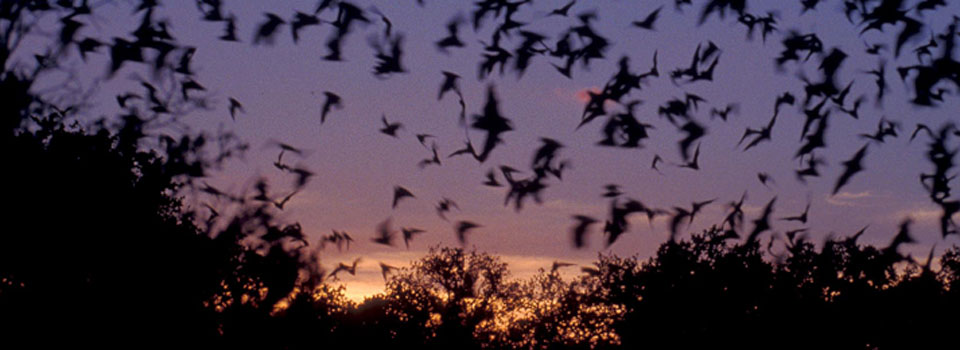Like most infectious diseases, rabies can attack several species. However, which species are going to be infected and why turns out to be a difficult problem that represents a major gap in our knowledge of how diseases emerge. A paper just published in the journal Science by a team of researchers led by Daniel G. Streicker, a Ph.D. student in the University of Georgia Odum School of Ecology, has begun to close that knowledge gap.
The paper, co-authored by researchers from the U.S. Centers for Disease Control and Prevention, the University of Tennessee-Knoxville and Western Michigan University, provides among the first estimates for any infectious disease of how often a disease can be transmitted across species in complex, multi-host communities and the likelihood of disease establishment in a new host species.
“Rabies happens to be an ideal system to answer these questions,” said Streicker. “Rabies occurs across the country, affects many different host species and is known to mutate frequently.” Although cases of rabies in humans are rare in the U.S., bats are the most common source of these infections, according to the CDC.
To determine the rate at which rabies infects multiple species, Streicker and his colleagues used an enormous dataset, unprecedented in its scope, containing hundreds of rabies viruses from 23 North American bat species. They used gene sequencing and tools from population genetics to quantify how many cross-species transmission (CST) events were expected to occur between each pair of species from any infected individual. Their analysis showed that, depending upon the species involved, a single infected bat may infect between 0 and 2 members of a different species; and that, on average, the probability of cross-species transmission occurs only once for every 73 transmissions within the same species.
Associate professor Sonia Altizer, Streicker’s advisor in the Odum School, called the finding a breakthrough. “The team defined, for the first time, a framework for quantifying the rates of CST across a network of host species that could be applied to other wildlife pathogens, and they developed novel methods to do it,” she explained.
The researchers also looked at what factors allow diseases to move across species, such as foraging behavior, geographic range and genetics.
Streicker believes that what he and his colleagues have learned about bat rabies will be influential in understanding the ecology, evolution and emergence of many wildlife viruses of public health and conservation importance. “The basic knowledge we’ve gained will be key to developing new intervention strategies for diseases that can jump from wildlife to humans,” he said.
Streicker is continuing his work with rabies and bats, with funding for a three-year study from the National Science Foundation. He and Altizer, in collaboration with investigators at the CDC, University of Michigan and the Peruvian Ministries of Health and Agriculture, will explore how human activities affect the transmission of the rabies virus in vampire bats in Peru and how those changes might feed back into altering the risk of rabies infection for humans, domesticated animals and wildlife.
“This kind of synthetic, interdisciplinary work is precisely what we aim for in the Odum School,” said John Gittleman, Odum School dean. “The success of this research hinges on bringing together the fields of genetics, evolution and disease in a large-scale ecological context. Big problems in ecology will be solved in this way.”


